Popular categories
Looking for a yarn?
Order DROPS Needles & Hooks
Clicking the ORDER button will redirect you to Wool Warehouse Direct Ltd website
The yarn cost is calculated from the pattern’s smallest size and the yarn’s cheapest product type. Looking for an even better price? You might find it on the DROPS Deals!
Circus Act
DROPS long sleeved jumpsuit in harlequin pattern, hat and socks in “BabyMerino”.
Change language:
English (US/in)- English (US/in)
- Česky - not translated
- Dansk
- Deutsch
- Eesti keel - not translated
- English (UK/cm)
- Español - not translated
- Français
- Íslenska - not translated
- Italiano - not translated
- Magyar
- Nederlands
- Norsk
- Polski
- Português
- Suomi
- Svenska
- English (UK/cm), Bulgaria
- English (UK/cm), Croatia
- English (UK/cm), Greece
- English (UK/cm), Latvia
- English (UK/cm), Lithuania
- English (UK/cm), Romania
- English (UK/cm), Slovenia
- Česky, Slovakia - not translated
Materials: DROPS Baby-Merino, from Garnstudio
Girl:
100-100-150 (150-150) color no 14, purple
100-100-150 (150-150) g color no 08, cerise
100-100-100 (100-150) g color no 04, yellow
50-50-50 (100-100) g color no 16, red
50-50-50 (50-50) g color no 02, off-white
Boy:
100-100-150 (150-150) color no 13, navy blue
100-100-150 (150-150) g color no 30, blue
100-100-100 (100-150) g color no 28, light mint
50-50-50 (100-100) g color no 14, purple
50-50-50 (50-50) g color no 2, off-white
DROPS circular needle, pointed and double pointed needles size 2 mm and 2.5 mm / US 0 an 1.5
DROPS button, 5 pcs
-------------------------------------------------------
Alternative Yarn – See how to change yarns here
Yarn Groups A to F – Use the same pattern and change the yarn here
Yarn usage using an alternative yarn – Use our yarn converter here
-------------------------------------------------------
You might also like...
Order DROPS Needles & Hooks
Clicking the ORDER button will redirect you to Wool Warehouse Direct Ltd website
The yarn cost is calculated from the pattern’s smallest size and the yarn’s cheapest product type. Looking for an even better price? You might find it on the DROPS Deals!
Pattern instructions
Knitting gauge: 26 sts x 35 rows on needles size 2.5 mm / US 1.5 in stockinette sts = 4" x 4" (10 x 10 cm).
Garter st, back and forth on needle: K all rows.
Rib: *K1, P1*, repeat from *-*.
Pattern: *M.1 (see diagram, the diagram show the pattern from the RS), then 9-10-9 (10-9) cm cerise(blue), M.1, 9-10-9 (10-9) cm red (purple), M.1, 9-10-9 (10-9) cm yellow (mint)*. Repeat from *-*.
Left leg:
Cast on 80-88-88 (96-96) sts on double pointed needles size 2 mm/US 0 with yellow (mint) and knit 8 cm / 3" Rib (to be folded double so measure as 4 cm / 1½").
Change to needle size 2.5 mm / US 1.5 and continue in pattern (see explanation above), at the same time inc on the inside of leg on every 2-3-3 (4-5) cm : 2 sts 4 times = 88-96-96 (104-104) sts. Remember the knitting gauge.
When piece measures 17-18-20 (25-28) cm divide piece at inside leg (= split) and complete piece back and forth on needle. Inc 1 st each side for seam = 90-98-98 (106-106) sts. When piece measures 18-20-23 (27-30) cm bind off 5-7-3 (5-5) sts each side = 80-84-92 (96-96) sts. Put piece aside and knit the other leg.
Right leg: knit as left leg.
Body piece:
Put left and right leg in on the same circular needle = 160-168-184 (192-192) sts. Knit 3 rounds and now inc mid back on both sides of the middle 2 sts on every other round: 1 st 8 times, at the same time dec mid front on every other round on both sides of the middle 2 sts: 1 st 8 times = 160-168-184 (192-192) sts.
When piece measures 25-26-28 (33-36) cm bind off 8 sts mid front for opening and continue back and forth on needle = 152-160-176 (184-184) sts.
When piece measures 47-51-56 (61-64) cm divide the piece as follows: 36-38-42 (44-44) sts = front piece, 80-84-92 (96-96) sts = back piece, 36-38-42 (44-44) sts = front piece. Now complete each piece separately.
Left front piece: = 36-38-42 (44-44) sts.
Bind off to shape the armhole on every other row: 2 sts 2-1-1 (0-1) times, 1 st 4-4-4 (1-1) times = 28-32-36 (41-43) sts.
When piece measures 53-58-64 (69-75) cm , dec to shape the neckline on every other row: 5-6-7 (7-10) sts 1 time, 2 sts 2-2-2 (3-3) times.
Bind off remaining sts when piece measures 57-62-68 (74-80) cm .
Right front piece: As left front piece, but mirrored.
Back piece: = 80-84-92 (96-96) sts. Dec to shape the armhole as described for front piece = 64-72-80 (90-94) sts.
When piece measures 55-60-66 (72-78) cm bind off the middle 20-22-24 (28-34) sts for neck and dec to shape the neckline on every other row: 2 sts 1 time, 1 st 1 time.
Bind off when piece measures 57-62-68 (74-80) cm .
Sleeve: Knitted in the round on double pointed needles. Cast on 44-46-50 (52-52) sts on double pointed needles size 2 mm with yellow (mint) and knit 4 cm / 1½" Rib.
Change to needle size 2.5 mm / US 1.5 and continue in pattern as described for body piece – make sure to place a pattern repeat mid upper sleeve.
At the same time after the Rib inc 2 sts mid under arm a total of 4-6-6 (8-16) times as follows:
Size 3 + 6/9 months: on every 6th round
Size 12/18 months: on every 7th round
Size 2 years: on every 5th round
Size 3/4 years: on every 4th round
= 52-58-62 (68-84) sts. When piece measures 12-16-18 (19-24) cm bind off 6 sts mid under sleeve and complete piece back and forth on needle.
Bind off to shape the sleeve cap on every other row: 3 sts 6 times, bind off.
Sleeve measures approx 16-20-22 (23-28) cm .
Assembly:
Sew shoulder seam. Pick up 80-86-94 (100-104) sts along left front piece on needle size 2 mm with purple (navy blue), P 1 row, knit 2.5 cm / 1" Rib and bind off.
Repeat along right front piece, but after 1 cm / ⅜" make 5 buttonholes evenly distributed on row. 1 buttonhole = bind off 3 sts and cast on 3 new sts on return row.
Fasten edges at bottom of split.
Collar: Triangles, see M.1. Cast on 8 sts on needle size 2.5 mm / US 1.5 with purple (navy blue) and knit garter st back and forth on needle, at the same time dec on every other row on the left side: 1 st 7 times = 1 st left on needle.
Change to off-white and inc 7 sts on next row = 8 sts on needle, continue in garter st and dec as described for the first triangle (1 triangle = approx 3.5 cm ). Continue like this and change color for every triangle until there are 10-10-11 (12-13) triangles. Now pick up 80-85-90(95-100) sts on needle size 2.5 mm / US 1.5 with purple (navy blue) in the outermost sts in the row of triangles. Put piece aside. Pick up 80-85-90 (95-100) sts round the neck on needle size 2.5 mm / US 1.5 purple (navy blue) (do not pick up on front edges) and knit tog sts from collar and sts from body piece as follows: knit tog first st from collar with first st from body piece, etc.
Change to needle size 2 mm/ US 0, pick up 10 sts on each front edge and knit 4 rows garter st on all sts. Bind off.
Sew tog split on inside of legs and sew tog the opening between legs from mid front to mid back. Set in sleeves and sew on buttons.
SOCKS:
Size: 3 – 6/9 – 9/12 months (2 -3/4 years)
Foot length: 10-11-12 (14-15) cm
DROPS STRAIGHT NEEDLES size 2 mm and 2.5 mm / US 0 an 1.5
DROPS crochet hook size 2.5 mm
Knitting gauge: 26 sts x 52 rows on needles size 2.5 mm / US 1.5 in garter st = 4" x 4" (10 x 10 cm).
Rib: *K1, P1*, repeat from *-*.
Garter st: K all rows
Cast on 46-50-50 (54-54) sts on needle size 2 mm/ US 0 with purple (navy blue) and knit 6-7-7 (8-8) cm Rib back and forth on needle.
Knit 1 row stockinette st and change to needle size 2.5 mm / US 1.5, at the same time dec 10-14-8 (12-8) sts = 36-36-42 (42-46) sts.
Knit next row as follows from RS: *K2 tog, 1 yo*, repeat from *-*.
Knit 1 row stockinette st. Put 12-12-14 (12-14) sts on a thread each side and knit 6-7-9 (10-10) cm garter st on the middle 12-12-14 (18-18) sts.
Put sts from threads back on needle and pick up 16-18-23 (26-26) sts on each side of the middle piece = 68-72-88 (94-98) sts.
Knit 3-4-4 (5-5) cm garter st on all sts, at the same time after 2-2.5-2.5 (3-3) cm dec on every other row as follows: 1 st at the beg and 1 st at the end of row and K2 tog on both sides of the middle 2 sts for another 3-4-4 (5-5) cm . Bind off and sew seam under foot and along the Rib – sew the upper part of the Rib from WS and fold it double.
Crochet a chain on needle size 2.5 mm / US 1.5, approx 30-35 cm long, and thread through eyelet row.
HAT:
Size: 3 – 6/9 – 12/18 months (2) years
DROPS STRAIGHT NEEDLES size 2 and 2.5 mm / US 0 an 1.5
Knitting gauge: 26 sts x 35 rows on needles size 2.5 mm / US 1.5 in stockinette st = 4" x 4" (10 x 10 cm).
Rib: *K1. P1*, repeat from *-*.
Cast on and knit row of triangle as described for collar above.
Now pick up 78-90-104 (104) sts on needle size 2.5 mm / US 1.5 with cerise(blue) in the outermost sts in the row of triangles. Knit 2 rows garter st and continue in stockinette st.
When piece measures 9-9-9 (10) cm change to needle size 2 mm and purple (navy blue), knit 1 cm / ⅜" Rib and bind off loosely in Rib.
Now pick up approx 26-28-30 (32) sts in the row of triangles on the middle 10-11-12 (12) cm on needle size 2.5 mm / US 1.5 with red (purple), knit 2 rows garter st and then 10-12-14 (14) cm stockinette st.
Change to purple (navy blue) and needle size 2 mm and pick up approx 32-32-34 (36) sts on each side of the cerise (blue) section incl on Rib = 90-92-98 (104) sts and knit 2 rows stockinette st.
Knit next row as follows from RS: *K2 tog, 1 yo*, repeat from *-*. Knit 1 row stockinette st, 1 row reverse stockinette st, bind off.
Ribbon: Cast on 4 sts with purple (navy blue) on needle size 2.5 mm / US 1.5 and K4, "don’t turn the piece, but pull yarn behind the 4 sts and knit the 4 sts again from RS* , repeat from *-* until ribbon measures approx 70 cm .
Sew tog sides on hat and pull ribbon through eyelet row.
For pattern for the blanket see DROPS 18-16
This pattern has been corrected. Click here to see the correction/s.
Updated pattern and sketch. Reference for where to find pattern for blanket has been added.
Diagram
All measurements in charts are in cm.

|
= off-white - for the jump suit |

|
= purple (navy blue) - for the jump suit |

What can you do with our patterns? You can share DROPS patterns online, using the pattern original picture, materials, name and number. But you are NOT ALLOWED to reproduce the complete pattern digitally in any way. Yarn stores are welcome to use the DROPS pattern database to promote the sale of our assortment. You can print out our patterns, make as many copies as you’d like. The only thing we ask is that you don't make any changes / additions to the original printed document. And that the patterns according to the DROPS philosophy are given out to the consumers for free. Editorials that wish to publish our patterns in printed books or magazines can contact us for more information. The sale of garments based on DROPS patterns is permitted as long as they are sold as single items or per order. Further commercial use of the patterns is not permitted. It has to be clearly stated that the garment is made based on a design from DROPS DESIGN. The use of clothing labels of which DROPS DESIGN forms part is conditioned by the inclusion of the following text: “A DROPS DESIGN made by …..”. The use of DROPS photos for marketing purposes/sales is only permitted in connection with the use/sale of DROPS products. The photos may not be cut or edited and the logo should be clearly visible.
We reserve the right to withdraw the permission for use of our patterns at any time, notwithstanding the reason.
Each of our patterns has specific tutorial videos to help you.
These step-by-step tutorials might also help you:
Why is the knitting/crochet tension so important?
Knitting tension is what determines the final measurements of your work, and is usually measured per 10 x 10 cm. It is provided like so: number of stitches in width x number of rows in height - eg: 19 stitches x 26 rows = 10 x 10 cm.
The knitting tension is very individual; some people knit/crochet loosely while others work tightly. You adjust the knitting tension with the needle size, which is why the suggested needle size only serve as a guide! You need to adjust this (up or down) to ensure that YOUR knitting tension matches the knitting tension provided in the pattern. If you work with a different knitting tension than provided you will have a different yarn consumption, and your work will have different measurements than what the pattern suggests.
The knitting tension also determines which yarns can replace each other. As long as you achieve the same knitting tension you can replace one yarn with another.
See DROPS lesson: How to measure your tension/gauge
See DROPS video: How to make a gauge tension swatch
How do I know how many balls of yarn I need?
The required amount of yarn is provided in grams, eg: 450 g. To calculate how many balls you’ll need you first need to know how many grams are in 1 ball (25g, 50g or 100g). This information is available if you click on the individual yarn quality on our pages. Divide the amount required with the amount of each ball. For example, if each ball is 50g (the most common amount), the calculation will be as follows: 450 / 50 = 9 balls.
Can I use a different yarn than what the pattern suggests?
The important thing when changing from one yarn to another is that the knitting/crochet tension remains the same. This is so that the measurements of the finished piece will be the same as on the sketch provided. It is easier to achieve the same knitting tension using yarns from the same yarn group. It is also possible to work with multiple strands of a thinner yarn to achieve the knitting tension of a thicker one. Please try our yarn converter. We recommend you to always work a test swatch.
Please NOTE: when changing yarn the garment might have a different look and feel to the garment in the photo, due to individual properties and qualities of each yarn.
See DROPS lesson: Can I use a different yarn than the one mentioned in the pattern?
What are the yarn groups?
All our yarns are categorised into yarn groups (from A to F) according to thickness and knitting tension – group A contains the thinnest yarns and group F the thickest. This makes it easier for you to find alternative yarns to our patterns, should you wish to switch yarn. All yarns within the same group have a similar knitting tension and can easily replace each other. However, different yarn qualities have different structures and properties which will give the finished work a unique look and feel.
How do I use the yarn converter?
At the top of all our patterns you’ll find a link to our yarn converter, which is a helpful tool should you wish to use a different yarn than suggested. By filling in the yarn quality you wish to replace, the amount (in your size) and number of strands, the converter will present good alternative yarns with the same knitting tension. Additionally it will tell you how much you’ll require in the new qualities and whether you’ll need to work with multiple strands. Most skeins are 50g (some are 25g or 100g).
If the pattern is worked with multiple colours, every colour will have to be converted separately. Similarly, if the pattern is worked with several strands of different yarns (for example 1 strand Alpaca and 1 strand Kid-Silk) you will have to find alternatives for each, individually.
Why do you show discontinued yarns in the patterns?
Since different yarns have different qualities and textures we have chosen to keep the original yarn in our patterns. However, you can easily find options among our available qualities by using our yarn converter, or simply pick a yarn from the same yarn group.
It is possible that some retailers still have discontinued yarns in stock, or that someone has a few skeins at home that they would like to find patterns for.
The yarn converter will provide both alternative yarn as well as required amount in the new quality.
What size should I knit?
If you think it's hard to decide what size to make, it can be a good idea to measure a garment you own already and like the size of. Then you can pick the size by comparing those measures with the ones available in the pattern's size chart.
You'll find the size chart at the bottom of the pattern.
See DROPS lesson: How to read size chart
Why do I get the wrong knitting tension with the suggested needle size?
The needle size provided in the pattern serves only as a guide, the important thing is to follow the knitting tension. And since knitting tension is very individual, you will have to adjust the needle size to ensure that YOUR tension is the same as in the pattern – maybe you’ll have to adjust 1, or even 2 needle sizes, up or down to achieve the correct tension. For this, we recommend that you work test swatches.
Should you work with a different knitting tension than the one provided, the measurements of the finished garment might deviate from the measurement sketch.
See DROPS lesson: How to measure your tension/gauge
See DROPS video: How to make a gauge tension swatch
Why is the pattern worked top-down?
Working a garment top-down provides more flexibility and room for personal adjustment. For example it is easier to try the garment on while working, as well as making adjustments to length of yoke and shoulder caps.
The instructions are carefully explaining every step, in the correct order. Diagrams are adjusted to the knitting direction and are worked as usual.
How do I work according to a knitting diagram?
The diagram depicts all rows/rounds, and every stitch seen from the right side. It is read from bottom to top, from right to left. 1 square = 1 stitch.
When working back and forth, every other row is worked from the right side and every other row is worked from the wrong side. When working from the wrong side, the diagram will have to be worked reversed: from left to right, knit stitches are purled, purl stitches are knit etc.
When working in the round every round is worked from the right side and the diagram are worked from right to left on all rounds.
See DROPS lesson: How to read knitting diagrams
How do I work according to a crochet diagram?
The diagram depicts all rows/rounds, and every stitch seen from the right side. It is worked from bottom to top, from right to left.
When working back and forth every other row is worked from the right side: from right to left and every other row is worked from the wrong side: from left to right.
When working in the round, every row in the diagram are worked from the right side, from right to left.
When working a circular diagram you start in the middle and work your way outwards, counter clockwise, row by row.
The rows usually start with a given number of chain stitches (equivalent to the height of the following stitch), this will either be depicted in the diagram or explained in the pattern.
See DROPS lesson: How to read crochet diagrams
How do I work several diagrams simultaneously on the same row/round?
Instructions for working several diagrams after each other on the same row/round, will often be written like so: “work A.1, A.2, A.3 a total of 0-0-2-3-4 times". This means you work A.1 once, then A.2 is worked once, and A.3 is repeated (in width) the number of times provided for your size – in this case like so: S = 0 times, M = 0 times, L=2 times, XL= 3 times and XXL = 4 times.
The diagrams are worked as usual: begin with the first row in A.1, then work the first row in A.2 etc.
See DROPS lesson: How to read knitting diagrams
See DROPS lesson: How to read crochet diagrams
Why are the sleeves shorter in larger sizes?
The total width of the garment (from wrist-to-wrist) will be larger in the larger sizes, despite the actual sleeves being shorter. The larger sizes have longer sleeve caps and wider shoulders, so there will be a good fit in all sizes.
Where on the garment is the length measured?
The measurement sketch/schematic drawing provides information regarding the full length of the garment. If it’s a jumper or a jacket the length is measured from the highest point on the shoulder (usually closest to the neckline), and straight down to the bottom of the garment. It is NOT measured from the tip of shoulder. Similarly, the length of yoke is measured from the highest point on the shoulder and down to where yoke is split into body and sleeves.
See DROPS lesson: How to read a schematic drawing
What is a repeat?
Diagrams are often repeated on the round or in height. 1 repeat is the diagram the way it appears in the pattern. If it says to work 5 repeats of A.1 in the round, then you work A.1 a total of 5 times after/next to each other in the round. If it says to work 2 repeats of A.1 vertically/in height you work the entire diagram once, then begin again at the start and work the entire diagram one more time.
Why does the piece start with more chain stitches than it’s worked with?
Chain stitches are slightly narrower than other stitches and to avoid working the cast-on edge too tight, we simply chain more stitches to begin with. The stitch count will be adjusted on the following row to fit the pattern and measurement sketch.
Why increase before the rib edge when the piece is worked top-down?
The rib edge is more elastic and will contract slightly compared to, for example, stocking stitch. By increasing before the rib edge, you avoid a visible difference in width between the rib edge and the rest of the body.
Why increase in the cast-off edge?
It’s very easy to cast off too tightly, and by making yarn overs while casting off (and simultaneously casting these off) you avoid a too tight cast off edge.
See DROPS video: How to bind off with yarn overs (yo)
How do I increase/decrease on every 3rd and 4th row/round alternately?
To achieve an even increase (or decrease) you can increase on, for example: every 3rd and 4th row alternately, like so: work 2 rows and increase on the 3rd row, work 3 rows and increase on the 4th. Repeat this until the increase is complete.
See DROPS lesson: Increase or decrease 1 st on every 3rd and 4th row alternately
How can I work a jacket in the round instead of back and forth?
Should you prefer to work in the round instead of back and forth, you may of course adjust the pattern. You’ll need to add steeks mid-front (usually 5 stitches), and follow the instructions. When you would normally turn and work from the wrong side, simply work across the steek and continue in the round. At the end you’ll cut the piece open, pick up stitches to work bands, and cover the cut edges.
See DROPS video: How to knit steeks and cut open
Can I work a jumper back and forth instead of in the round?
Should you prefer to work back and forth instead of in the round, you may of course adjust the pattern so you work the pieces separately and then assemble them at the end. Divide the stitches for the body in 2, add 1 edge stitch in each side (for sewing) and work the front and back pieces separately.
See DROPS lesson: Can I adapt a pattern for circular needles into straight needles?
Why is the pattern slightly different than what I see in the photo?
Pattern repeats can vary slightly in the different sizes, in order to get the correct proportions. If you’re not working the exact same size as the garment in the photo, yours might deviate slightly. This has been carefully developed and adjusted so that the complete impression of the garment is the same in all sizes.
Make sure to follow instructions and diagrams for your size!
How do I make a women’s size garment into a men’s size one?
If you have found a pattern you like which is available in women’s size it’s not very difficult to convert it to men’s size. The biggest difference will be the length of sleeves and body. Start working on the women size that you think would fit across the chest. The additional length will be worked right before you cast off for the armhole/sleeve cap. If the pattern is worked top-down you can add the length right after the armhole or before the first decrease on sleeve.
Regarding additional yarn amount, this will depend on how much length you add, but it is better with a skein too many than too few.
How do I prevent a hairy garment from shedding?
All yarns will have excess fibres (from production) that might come off as lint or shedding. Brushed yarns (ie hairier yarns) have more of these loose, excess fibres, causing more shedding.
Shedding also depends on what is worn under or over the garment, and whether this pulls at the yarn fibres. It’s therefore not possible to guarantee that there will be no shedding
Below are some tips on how to get the best result when working with hairier yarns:
1. When the garment is finished (before you wash it) shake it vigorously so the looser hairs come off. NOTE: do NOT use a lint roller, brush or any method that pulls at the yarn.
2. Place the garment in a plastic bag and put it in your freezer - the temperature will cause the fibres to become less attached to each other, and excess fibres will come off easier.
3. Leave in the freezer for a few hours before taking it out and shaking it again.
4. Wash the garment according to the instructions on the yarn label.
Why does my garment pill?
Pilling is a natural process that happens to even the most exclusive of fibers. It's a natural sign of wear and tear that is hard to avoid, and that is most visible in high friction areas of your garment like a sweater's arms and cuffs.
You can make your garment look as new by removing the pilling, using a fabric comb or a pill/lint remover.
In the meantime, you can read the questions and answers that others have left to this pattern or join the DROPS Workshop on Facebook to get help from fellow knitters/crocheters!
Circus Act |
|||||||
 |
 |
||||||
DROPS long sleeved jumpsuit in harlequin pattern, hat and socks in “BabyMerino”.
DROPS Baby 4-4 |
|||||||
|
JUMPSUIT: Knitting gauge: 26 sts x 35 rows on needles size 2.5 mm / US 1.5 in stockinette sts = 4" x 4" (10 x 10 cm). Garter st, back and forth on needle: K all rows. Rib: *K1, P1*, repeat from *-*. Pattern: *M.1 (see diagram, the diagram show the pattern from the RS), then 9-10-9 (10-9) cm cerise(blue), M.1, 9-10-9 (10-9) cm red (purple), M.1, 9-10-9 (10-9) cm yellow (mint)*. Repeat from *-*. Left leg: Cast on 80-88-88 (96-96) sts on double pointed needles size 2 mm/US 0 with yellow (mint) and knit 8 cm / 3" Rib (to be folded double so measure as 4 cm / 1½"). Change to needle size 2.5 mm / US 1.5 and continue in pattern (see explanation above), at the same time inc on the inside of leg on every 2-3-3 (4-5) cm : 2 sts 4 times = 88-96-96 (104-104) sts. Remember the knitting gauge. When piece measures 17-18-20 (25-28) cm divide piece at inside leg (= split) and complete piece back and forth on needle. Inc 1 st each side for seam = 90-98-98 (106-106) sts. When piece measures 18-20-23 (27-30) cm bind off 5-7-3 (5-5) sts each side = 80-84-92 (96-96) sts. Put piece aside and knit the other leg. Right leg: knit as left leg. Body piece: Put left and right leg in on the same circular needle = 160-168-184 (192-192) sts. Knit 3 rounds and now inc mid back on both sides of the middle 2 sts on every other round: 1 st 8 times, at the same time dec mid front on every other round on both sides of the middle 2 sts: 1 st 8 times = 160-168-184 (192-192) sts. When piece measures 25-26-28 (33-36) cm bind off 8 sts mid front for opening and continue back and forth on needle = 152-160-176 (184-184) sts. When piece measures 47-51-56 (61-64) cm divide the piece as follows: 36-38-42 (44-44) sts = front piece, 80-84-92 (96-96) sts = back piece, 36-38-42 (44-44) sts = front piece. Now complete each piece separately. Left front piece: = 36-38-42 (44-44) sts. Bind off to shape the armhole on every other row: 2 sts 2-1-1 (0-1) times, 1 st 4-4-4 (1-1) times = 28-32-36 (41-43) sts. When piece measures 53-58-64 (69-75) cm , dec to shape the neckline on every other row: 5-6-7 (7-10) sts 1 time, 2 sts 2-2-2 (3-3) times. Bind off remaining sts when piece measures 57-62-68 (74-80) cm . Right front piece: As left front piece, but mirrored. Back piece: = 80-84-92 (96-96) sts. Dec to shape the armhole as described for front piece = 64-72-80 (90-94) sts. When piece measures 55-60-66 (72-78) cm bind off the middle 20-22-24 (28-34) sts for neck and dec to shape the neckline on every other row: 2 sts 1 time, 1 st 1 time. Bind off when piece measures 57-62-68 (74-80) cm . Sleeve: Knitted in the round on double pointed needles. Cast on 44-46-50 (52-52) sts on double pointed needles size 2 mm with yellow (mint) and knit 4 cm / 1½" Rib. Change to needle size 2.5 mm / US 1.5 and continue in pattern as described for body piece – make sure to place a pattern repeat mid upper sleeve. At the same time after the Rib inc 2 sts mid under arm a total of 4-6-6 (8-16) times as follows: Size 3 + 6/9 months: on every 6th round Size 12/18 months: on every 7th round Size 2 years: on every 5th round Size 3/4 years: on every 4th round = 52-58-62 (68-84) sts. When piece measures 12-16-18 (19-24) cm bind off 6 sts mid under sleeve and complete piece back and forth on needle. Bind off to shape the sleeve cap on every other row: 3 sts 6 times, bind off. Sleeve measures approx 16-20-22 (23-28) cm . Assembly: Sew shoulder seam. Pick up 80-86-94 (100-104) sts along left front piece on needle size 2 mm with purple (navy blue), P 1 row, knit 2.5 cm / 1" Rib and bind off. Repeat along right front piece, but after 1 cm / ⅜" make 5 buttonholes evenly distributed on row. 1 buttonhole = bind off 3 sts and cast on 3 new sts on return row. Fasten edges at bottom of split. Collar: Triangles, see M.1. Cast on 8 sts on needle size 2.5 mm / US 1.5 with purple (navy blue) and knit garter st back and forth on needle, at the same time dec on every other row on the left side: 1 st 7 times = 1 st left on needle. Change to off-white and inc 7 sts on next row = 8 sts on needle, continue in garter st and dec as described for the first triangle (1 triangle = approx 3.5 cm ). Continue like this and change color for every triangle until there are 10-10-11 (12-13) triangles. Now pick up 80-85-90(95-100) sts on needle size 2.5 mm / US 1.5 with purple (navy blue) in the outermost sts in the row of triangles. Put piece aside. Pick up 80-85-90 (95-100) sts round the neck on needle size 2.5 mm / US 1.5 purple (navy blue) (do not pick up on front edges) and knit tog sts from collar and sts from body piece as follows: knit tog first st from collar with first st from body piece, etc. Change to needle size 2 mm/ US 0, pick up 10 sts on each front edge and knit 4 rows garter st on all sts. Bind off. Sew tog split on inside of legs and sew tog the opening between legs from mid front to mid back. Set in sleeves and sew on buttons. SOCKS: Size: 3 – 6/9 – 9/12 months (2 -3/4 years) Foot length: 10-11-12 (14-15) cm DROPS STRAIGHT NEEDLES size 2 mm and 2.5 mm / US 0 an 1.5 DROPS crochet hook size 2.5 mm Knitting gauge: 26 sts x 52 rows on needles size 2.5 mm / US 1.5 in garter st = 4" x 4" (10 x 10 cm). Rib: *K1, P1*, repeat from *-*. Garter st: K all rows Cast on 46-50-50 (54-54) sts on needle size 2 mm/ US 0 with purple (navy blue) and knit 6-7-7 (8-8) cm Rib back and forth on needle. Knit 1 row stockinette st and change to needle size 2.5 mm / US 1.5, at the same time dec 10-14-8 (12-8) sts = 36-36-42 (42-46) sts. Knit next row as follows from RS: *K2 tog, 1 yo*, repeat from *-*. Knit 1 row stockinette st. Put 12-12-14 (12-14) sts on a thread each side and knit 6-7-9 (10-10) cm garter st on the middle 12-12-14 (18-18) sts. Put sts from threads back on needle and pick up 16-18-23 (26-26) sts on each side of the middle piece = 68-72-88 (94-98) sts. Knit 3-4-4 (5-5) cm garter st on all sts, at the same time after 2-2.5-2.5 (3-3) cm dec on every other row as follows: 1 st at the beg and 1 st at the end of row and K2 tog on both sides of the middle 2 sts for another 3-4-4 (5-5) cm . Bind off and sew seam under foot and along the Rib – sew the upper part of the Rib from WS and fold it double. Crochet a chain on needle size 2.5 mm / US 1.5, approx 30-35 cm long, and thread through eyelet row. HAT: Size: 3 – 6/9 – 12/18 months (2) years DROPS STRAIGHT NEEDLES size 2 and 2.5 mm / US 0 an 1.5 Knitting gauge: 26 sts x 35 rows on needles size 2.5 mm / US 1.5 in stockinette st = 4" x 4" (10 x 10 cm). Rib: *K1. P1*, repeat from *-*. Cast on and knit row of triangle as described for collar above. Now pick up 78-90-104 (104) sts on needle size 2.5 mm / US 1.5 with cerise(blue) in the outermost sts in the row of triangles. Knit 2 rows garter st and continue in stockinette st. When piece measures 9-9-9 (10) cm change to needle size 2 mm and purple (navy blue), knit 1 cm / ⅜" Rib and bind off loosely in Rib. Now pick up approx 26-28-30 (32) sts in the row of triangles on the middle 10-11-12 (12) cm on needle size 2.5 mm / US 1.5 with red (purple), knit 2 rows garter st and then 10-12-14 (14) cm stockinette st. Change to purple (navy blue) and needle size 2 mm and pick up approx 32-32-34 (36) sts on each side of the cerise (blue) section incl on Rib = 90-92-98 (104) sts and knit 2 rows stockinette st. Knit next row as follows from RS: *K2 tog, 1 yo*, repeat from *-*. Knit 1 row stockinette st, 1 row reverse stockinette st, bind off. Ribbon: Cast on 4 sts with purple (navy blue) on needle size 2.5 mm / US 1.5 and K4, "don’t turn the piece, but pull yarn behind the 4 sts and knit the 4 sts again from RS* , repeat from *-* until ribbon measures approx 70 cm . Sew tog sides on hat and pull ribbon through eyelet row. For pattern for the blanket see DROPS 18-16 |
|||||||
Diagram explanations |
|||||||
|
|||||||

|
|||||||
|
Have you made this or any other of our designs? Tag your pictures in social media with #dropsdesign so we can see them! Do you need help with this pattern?You'll find tutorial videos, a Comments/Questions area and more by visiting the pattern on garnstudio.com. © 1982-2024 DROPS Design A/S. We reserve all rights. This document, including all its sub-sections, has copyrights. Read more about what you can do with our patterns at the bottom of each pattern on our site. |
|||||||
With over 40 years in knitting and crochet design, DROPS Design offers one of the most extensive collections of free patterns on the internet - translated to 17 languages. As of today we count 309 catalogs and 11624 patterns - 11615 of which are translated into English (US/in).
We work hard to bring you the best knitting and crochet have to offer, inspiration and advice as well as great quality yarns at incredible prices! Would you like to use our patterns for other than personal use? You can read what you are allowed to do in the Copyright text at the bottom of all our patterns. Happy crafting!














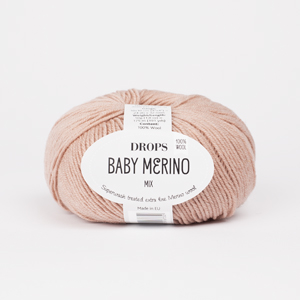





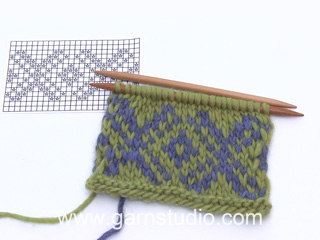
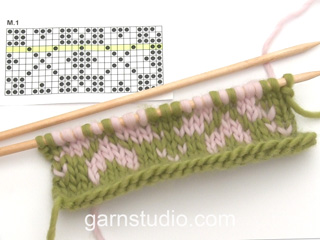

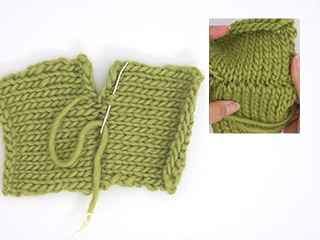



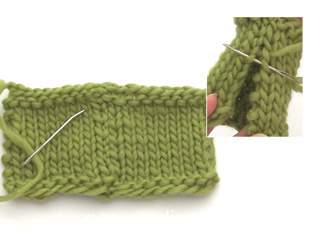
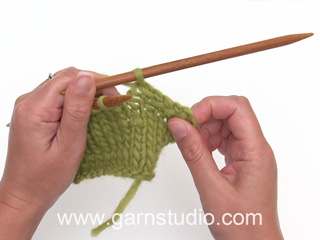

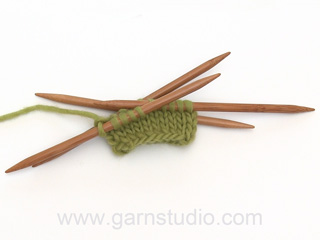





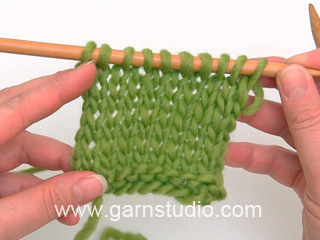






















Comments / Questions (10)
Letar efter ett mönster på vit virkad babysitter med rosa bård nere på koftan. Mönster är från tidigt 80 talet. Med vänlig hälsning, Mimmi Jacobsen
03.04.2021 - 20:42DROPS Design answered:
Hej Mimmi, Inte säker på vad du söker, men här ser du allt virkat till baby: Baby - Virkat
06.04.2021 - 15:13Det ser ud til at drenge versionen har adskilt trøje. Er der en opskrift til denne?
29.06.2019 - 16:53DROPS Design answered:
Hej. Du hittar den här. Lycka till!
01.07.2019 - 11:47Hvor mange gram garn skal der bruges, hvis den kun skal strikkes i en farve? Jeg tænker, det måske er mindre, da der ikke er spild garn mht. rester af de forskellige farver, der bliver brugt.
03.10.2016 - 12:29DROPS Design answered:
Hej Mette. Det ved jeg desvaerre ikke. Men sammenligner jeg med f.eks. BabyDROPS 21-3, som har mindre farver er der brugt 200 gr BabyAlpaca Silk for den mindste str. Saa jeg ville nok regne ud derfra
03.10.2016 - 17:08Selam wrote:
Any pictures to show the colour combination for the boys version? Thank you
04.08.2015 - 00:40DROPS Design answered:
Dear Selam, sorry, we do not have such a picture, check the colours from shadecard and remember you can get tips & advices choosing colours with your DROPS store. Happy knitting!
04.08.2015 - 09:02Waarom staat er bovenaan het patroon niet voor welke maat het is? Dat staat pas aan het eind van het kruippakje.
18.12.2014 - 21:38DROPS Design answered:
Hoi Maatkamp. Dat was helaas vergeten bij de vertaling. Ik heb het nu toegevoegd. Veel breiplezier.
19.12.2014 - 19:07Pour la combinaison arlequin, je ne comprends pas "diviser l'ouvrage à l'intérieur de la jambe(= fente)"
19.06.2014 - 16:56DROPS Design answered:
Bonjour Cathrine, on continue à partir d'ici en allers et retours, tourner à la fin du tour et augmentez 1 m de chaque côté pour les coutures. La suite du travail sera ensuite facilité lorsque l'on tricotera les 2 jambes ensembles. Bon tricot!
19.06.2014 - 17:33Hallo, ich verstehe die Anleitung bezüglich der Dreiecke nicht. Muss ich die Dreiecke alle einzeln Stricken(abketten?) und dann dazwischen 80 M aufnehmen? Was bedeutetet: in den Dreiecken 80 M. aufnehmen? Ist die Mütze jetzt schon richtig beschrieben? Habe in einem Kommentar gelesen, dass sie neu übersetzt werden muss, weil etwas in der Anleitung fehlt? Das Set ist total süß. LG Jutta
03.03.2014 - 13:29DROPS Design answered:
Liebe Jutta, die Dreiecke werden an einem Stück gestrickt. Sie schlagen 8 M an, nehmen an der linken Seite wie erklärt ab und schlagen dann an der linken Seite zu der letzten M 7 M neu an, sodass Sie wieder 8 M haben, und stricken wie vorher. So entstehen auf der linken Seite die Dreiecksspitzen, rechts ergibt sich ein gerader Rand. Aus diesem Rand fassen Sie dann 80 M auf und stricken den Kragen wie erklärt an den Halsrand. Die Mütze wurde neu übersetzt.
04.03.2014 - 10:38Ich wollte die Mütze stricken, jedoch stimmt die Übersetzung hier nicht. Die Angabe, dass aus der unteren Reihe der Dreiecke M aufgen. werden fehlt ebenso wie Angaben zu cm Bündchen und glatt rechts der kurzen Teile. Bitte noch einmal überarbeiten - die Mütze ist so schön!
27.10.2013 - 13:33DROPS Design answered:
Liebe Brunhilde, wir werden die Mütze bei Gelegenheit neu übersetzen, danke für den Hinweis!
29.10.2013 - 09:48Erme står rett etter høyre forstk.
28.05.2008 - 22:01Hvor er oppskriften til ermene på denne oppskriften
27.05.2008 - 21:00